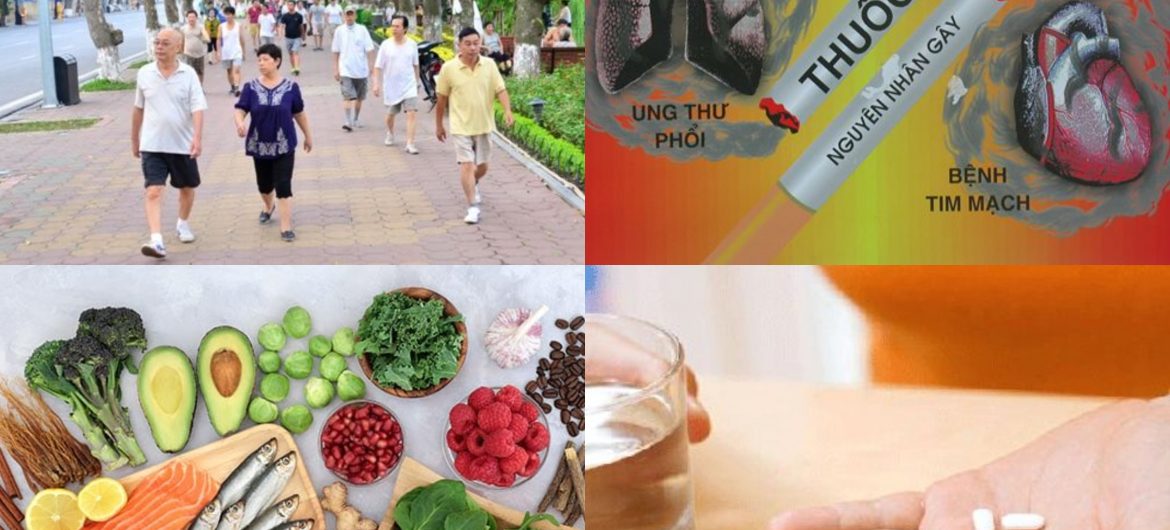A coronary stent is a procedure used to treat narrowing or blockage of the coronary arteries. During the intervention, the doctor briefly inflates a small balloon, then deflates it in the coronary artery, to help dilate the artery and press the plaque against the artery wall. Next, the doctor will place a stent, a small stainless steel mesh tube, into the aneurysm to keep the artery open to ensure that the blood supply through the artery is maintained. When needed, the doctor can place multiple stents.
- How should the post-interventional puncture site care?
Use your hands or a soft towel to gently wipe, do not rub the wound, let it dry, do not apply cream, ointment or anything to the wound, wear loose clothes, do not soak in the bath, go swimming in one week after the procedure.
If the incision site is bleeding or swollen, the patient should lie down and press his or her hand over the wound for about 30 minutes to stop the bleeding. If the incision shows signs of purulent discharge, it is necessary to go back to the doctor immediately to treat the wound infection, to avoid unnecessary complications.
- How to move after stent placement? After the procedure, the patient can still function normally. Walk gently after about 2 days. Avoid vigorous exercise, affecting the incision. In the first week, the patient can practice walking on flat surfaces, should not drive, travel long distances, ride a bicycle, carry or participate in heavy physical activities. From the 2nd week, gradually increase the level of fitness within the allowable comfort, walk a little further but do not jog.
In the long term, do normal physical activity and play sports with your doctor’s permission. The most recommended way to exercise: walk ≥30 minutes/time x 5 times/week. If chest pain or shortness of breath occurs, stop exercising immediately and contact your doctor promptly for treatment. Manage stress, create a comfortable, healthy living environment.
- What kind of diet is reasonable?
A healthy diet to both ensure nutrition and help wounds heal. It should be noted that cooking is light, reducing salt and fish sauce when processing, should eat lighter than normal people to avoid hypertension and reduce edema. Protein: Should eat a moderate amount of lean meat, skinless chicken, eggs, tofu; Eat 2 meals a week of fish like salmon, mackerel or sardines to provide your body with heart-healthy omega-3 fats. In addition, it is necessary to avoid red meat such as beef, dog meat … to avoid increasing cholesterol and aggravating coronary atherosclerosis.
Fat: Use easily digestible fats (unsaturated fats) such as vegetable oils (olive oil, sunflower oil, canola oil…) or from nuts, avocados, fish oils; minimize animal fat, fast food, animal skin.
Fiber: Add to the menu a lot of fresh fruits and vegetables.
Water: Drink plenty of water and limit stimulants and sugary drinks. It is recommended to drink 8-10 glasses of water per day to increase the excretion of contrast material used during the intervention. In addition to water, patients should also drink low-fat milk, yogurt, unsweetened milk or preferably soy milk.
- Can we continue to smoke after stent placement?
Stop smoking because nicotine in cigarettes constricts blood vessels, making the heart work harder. Quitting smoking is the best way to reduce the risk of coronary heart disease events
- How to use medicine and follow-up examination? After a coronary stent is placed, you will need lifelong medication to prevent blood clots from forming in the coronary stent. The use of drugs in the wrong dosage and improper use are equally dangerous. Long-term use of anticoagulants is also associated with an increased risk of bleeding. Therefore, during use, if there are signs of bruising under the skin, bleeding gums, stomach bleeding, nosebleeds, coffee grounds-colored stools, etc., the patient needs to be re-examined. You can adjust the dose of your medicine accordingly, but absolutely do not quit without consulting your doctor.
In addition, it is necessary to follow the schedule of regular check-ups according to the doctor’s appointment schedule.
http://www.dananghospital.org.vn/tin-tuc/chan-soc-va-dieu-tri-sau-dat-stent-dong-mach-vanh.htm

 Search
Search  Hot News
Hot News